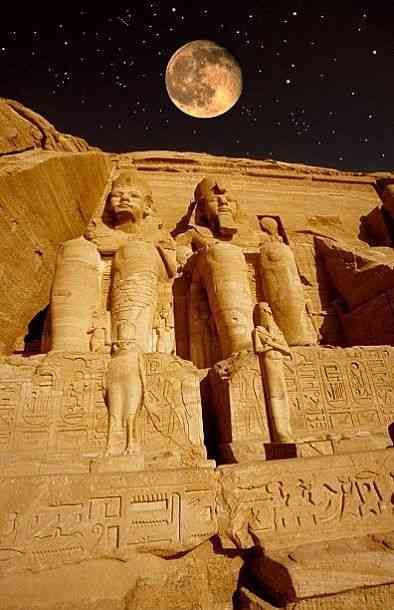One of the most important Egyptian treasures, with its magic and historical value, is the Abu Simbel Temple, or the great temple that leaves behind the story of the discovery of how fate played a great role. What is this temple? And why it is called by that name? What are the miracles in the building?
Abu Simbel Temple Temple is located on the west bank of Lake Nasser, 230 km southwest of Aswan. It is one of the UNESCO World Heritage sites, known as the Nubian Archeology Temple.
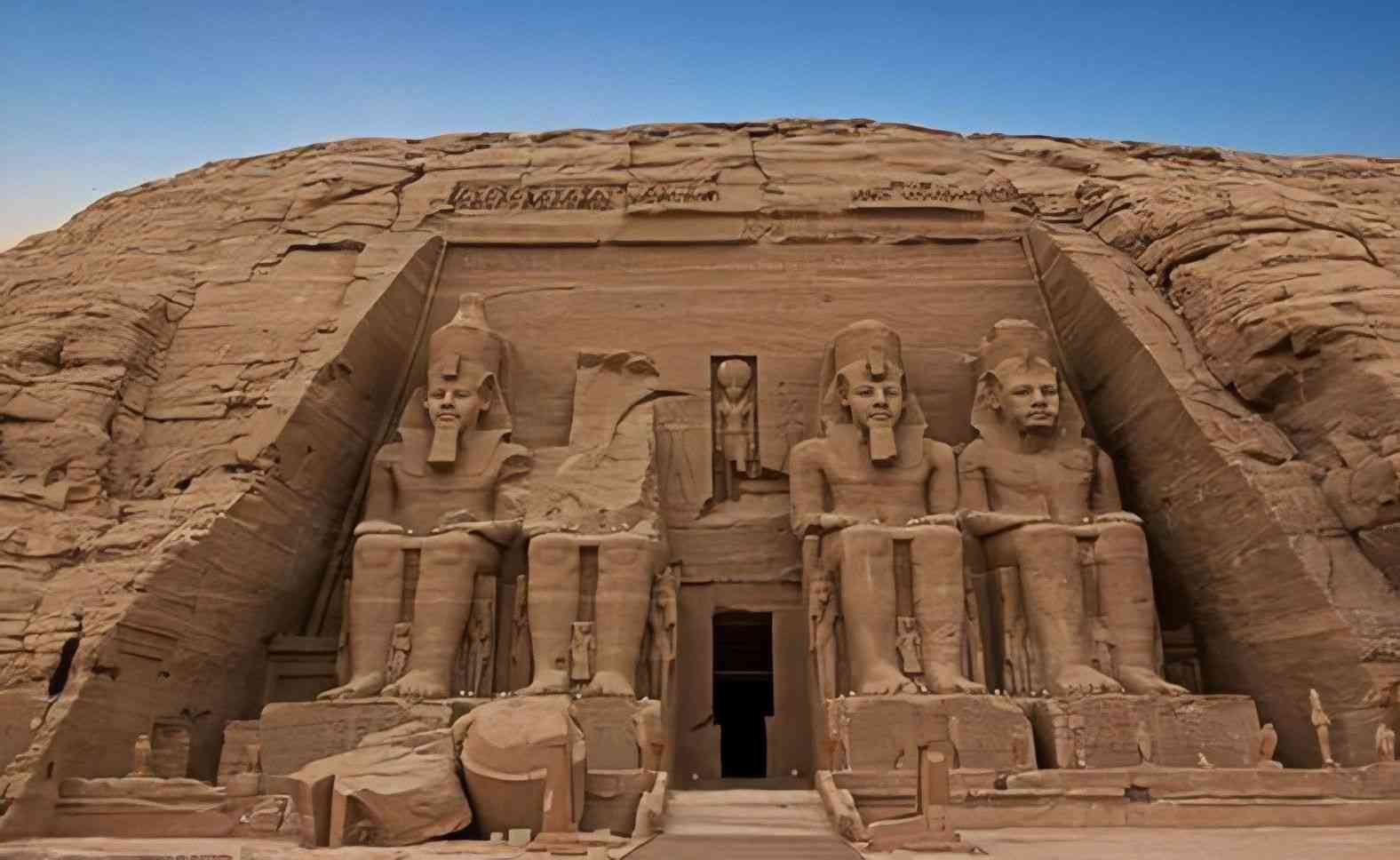
Discover the temple
The story of this place begins from the story of the presence of the little boy called Easambol who led the explorers to the site again, which he saw from time to time buried in quicksand. In the end, it was said that the explorers gave the name of this child to the temple to become the Abu Simbel temple.
He discovered the Abu Simbel temple when he came to Egypt in 1812, a Swiss discoverer named "John Berckhart", and decided to go to Nubia to visit the temples there. On March 22, 1813, he arrived in the town of Abu Simbel to visit the temple of Queen Nefertari, the wife of Ramses the Second. Himself in front of the heads of four huge statues buried in the sand, all sculpted in the same mountain. Burckhardt left the site to spread the word about this discovery around the world.
In 1816, the Italian archaeologist, "Giovanni Belzoni", at the head of a mission of technicians, arrived at Abu Simbel. After seeing the memoirs of Purkhart, he made an exploratory trip to the top of Nubia, and after arriving at the site of the Abu Simbel temple. Sand from the facade statues, even inside the temple, and discovered its halls and lobbies until it reached the Holy of Holies of the temple where the statues of the gods are located next to the statue of Ramses II.
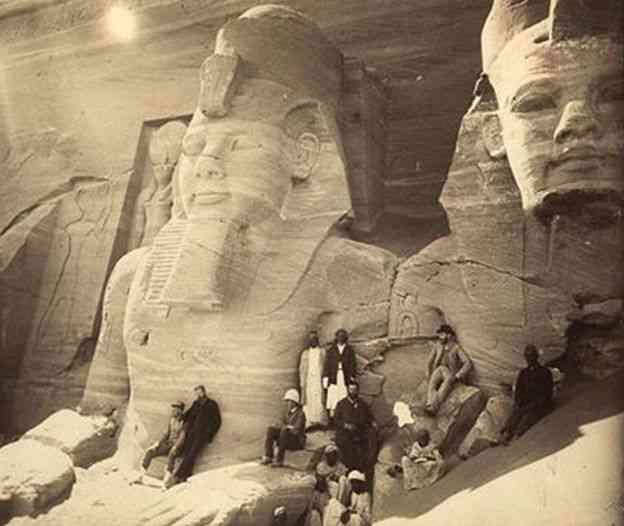
The temple's sand-cleaning operations resulted in the discovery of a cabin on the northern side of the facade, which had not been previously known. And "Parsanti" protected the temple from what was threatening it from the continuous flow of sand, so he built high walls over the high plateau from which the flow of sand starts to block the sweeping sand stream and divert its course so that the temple remains immortal for thousands of years as he wanted him, builder, 3300 years ago in a march Eternity and eternity.
Building the temple
It was later said that the Temple of Abu Simbel was constructed by Ramses II as a permanent monument to him and his wife, Queen Nefertari, and to celebrate the anniversary of his victory over the Houthis in the Battle of Kadesh, and to intimidate the people of Nubia adjacent to him, and construction began in 1244 BC and continued for about 20 years until 1224 BC. It consists of two temples, "Abu Simbel Al Kabir" and "Abu Simbel Al Sagheer", both of which are more spacious and luxurious than all Egyptian rock temples of all time. The great temple was dedicated to Ramses II, unified with the Lord, Amon Ra, and Ra’s sister Hur (The Emerging Sun). As for the little one, Nefertari is a unified wife with the goddess Hathor.
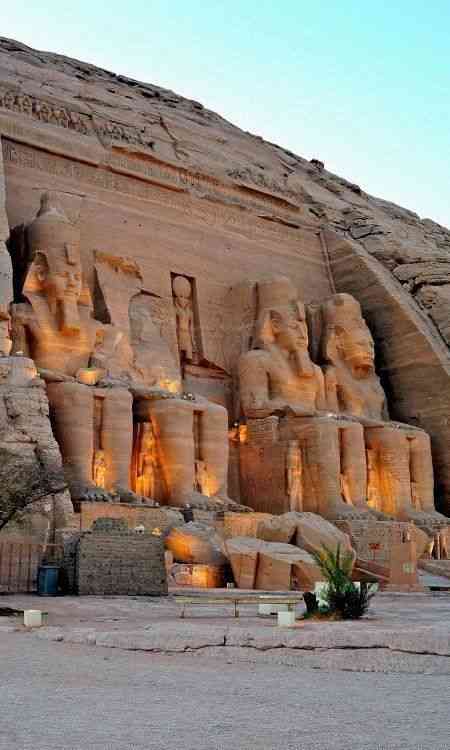
Temples were excavated in rocks above the surface of the Nile. Its façades are cycloid sculptures. The great temple is dedicated to many deities: the god Amon Ra, the god Ptah (patron of the letter and the city of Memphis), the god Horus in the form of a falcon with a human body, and Ramses himself. The sculptures were placed 55 meters deep in the underground halls of Pharaoh sitting in ceremonial gowns with his hands on his knees. Among the feet of the colossal statues are the statues of his wife, Nefertari, of man’s standing. Above the entrance to the temple in a carved niche is a great relief of incarnation with the falcon's head of the sun god Horus Amon The facade composition is quite unusual in its form and grandeur.
Abu Simbel is the only cave temple in the world, the façade of which consists of four seated sculptures, which are among the largest and oldest monolithic stone statues in the rock at the feet - the entrance to the high hall four pairs of columns support the ceiling, and ten meters statues tend against the columns in the form of Osiris The god of nature and the afterlife king of the roof are covered with paintings depicting the sky. In the center of the ceiling the goddess skulls are looped to the sides - stars. Everything in the temple glorifies Ramses
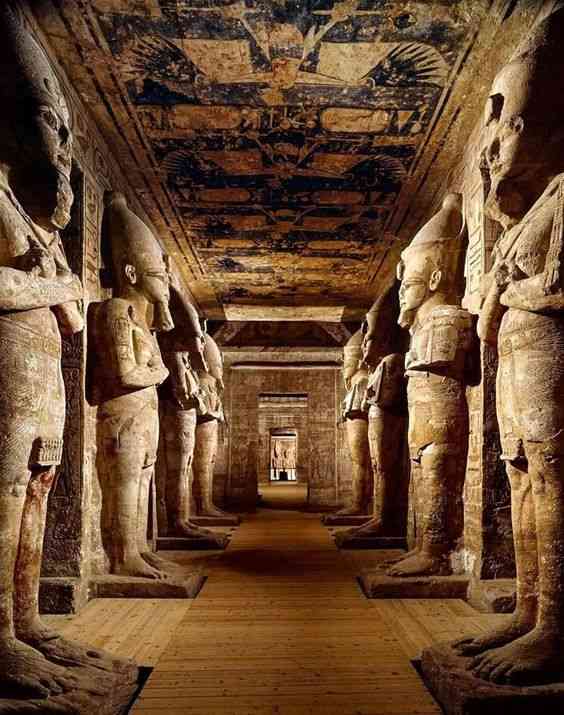
The walls of the colonnade and the smaller four-pillar hall are covered with reliefs depicting the pharaoh's victories , the main place is occupied with scenes of battles. The battle of Ramses with the Libyan king clearly shows the scenes of the ceremonial killing of the Nubian and Libyan prisoners were preserved, and the scenes of presenting the Hittites and captured Nubians to the gods. The names of the sculptor Theban, authors of the inscriptions: Pia, Panifer, and Heavy, were also preserved.
Across the corridor is the third hall, designed for the Holy Tour the boardwalk ends with a small sanctuary with four sculptures of the main gods.
The small temple
Dedicated to his wife, Queen Nefertari, and also to the gods, Hathor, the gods of love, beauty, and sky, which is 150 meters from the largest temple. Her king Akhenaten.
She was photographed as a woman with a cow's head. The façade of the temple consists of six sculptures (three statues on each side of the entrance) parked in niches. The central figure in each trinity is Nefertari, surrounded by Ramses sculptures.
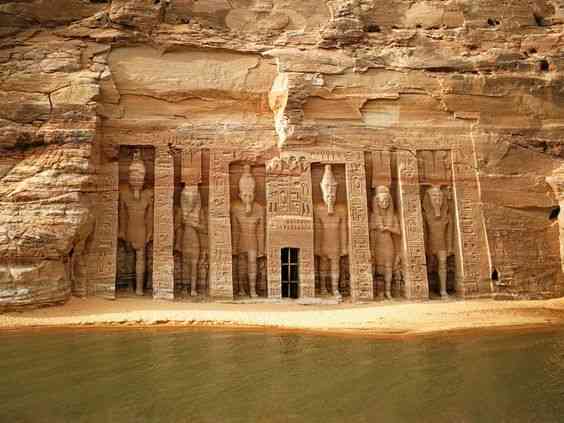
The small temple is also made in the form of a hypostyle - capitals with crowns depicting the head of a woman with cow horns. Deep in the temple is a sanctuary with a statue of the cow goddess Hathor. Small temple statues are twice smaller than large temple statues.
The scientific miracle
The most distinguishing feature of the temple and dazzling and indicates the genius of the Pharaohs is the occurrence of astronomical phenomenon twice every year as sunlight enters the front of the temple and through a narrow opening to perpendicular to Ramses II’s face inside his room deep inside the temple once on the day of his birth anniversary and once on the anniversary of his assumption of power.
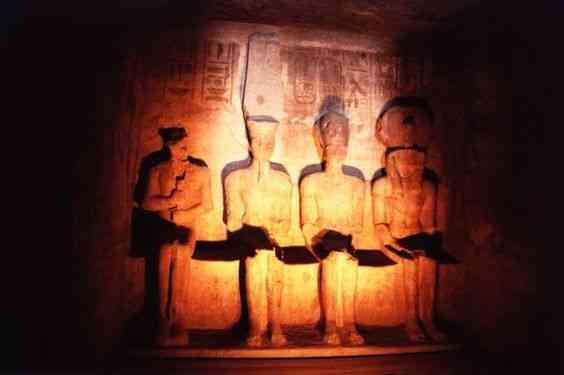
The stories in the temple
On the south side of the balcony and opposite the solar pavilion, we find a unique painting that tells the story of the marriage of King Ramses the second of the eldest daughter of the Hittite king Khattusel III in the thirty-fourth year of his rule, and the painting is divided into two parts, in which King Ramses II tells that the Hittite king sent a message to him and promised him in it To marry him from his older daughters in addition to a gift as a dowry at his marriage ceremony, but the bride-and-bride did not reach Ramses, and anger found him angry, and he was afraid that the Hittite king would not fulfill his promises.
So he sent an angry message to him, but the Hittite king was not present in his capital, and the letter received the mother of the bride, and the Queen returned Al-Hittiyeh with another message that King Ramses blames for his aggression in the letter, and I told him that the reason for the bride's delay is the burning of their royal palace in the Hittite capital Khatuchash Bogaz Koy in Turkey currently, but it seems that the Queen’s justifications were not the real reason for the bride’s delay because the queen at the end of her message asked about the truth of the rumor In the royal palaces that Ramses, after his marriage to one of the Mitanni princesses, refused to allow her family to visit Egypt to see their daughter.
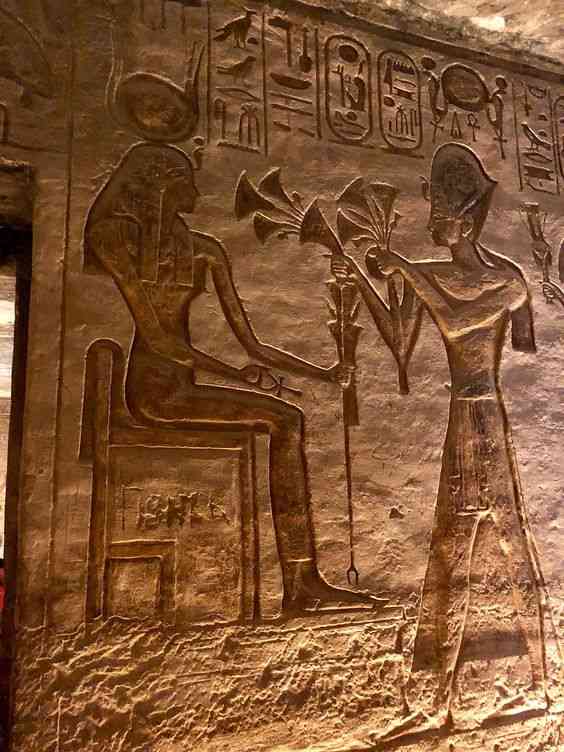
Save Abu Simbel temple
The temples were a few meters above the new water level. Now, as before, it rises majestically over the waters of the Nile, and the first rays of the morning sun illuminate the statue of Ramses, sitting beside the gods in the depths of the great temple for thirty-three centuries, standing on the banks of the Nile and seeing the muddy waters of the river, which bring life to all of Egypt. In the 1950s, the towering New Aswan Dam was to raise the water level in the Nile by 62 meters and flood the famous temples. Temples may find themselves in a deep pit, stop controlling the areas of the Nile Valley, and lose their aesthetic impact on people. So we decided to move them to a new place.
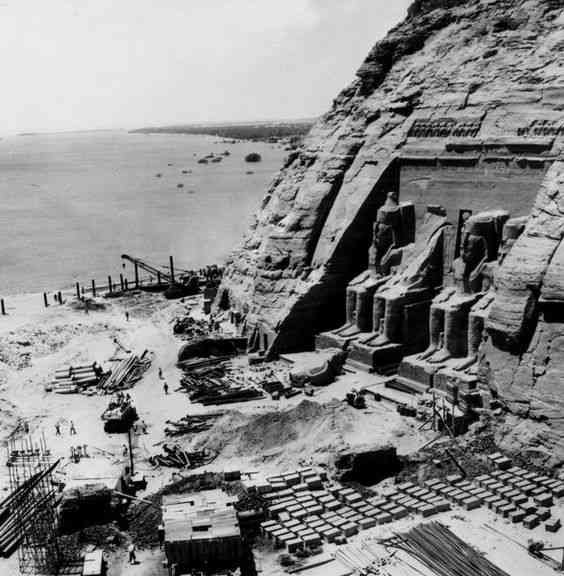
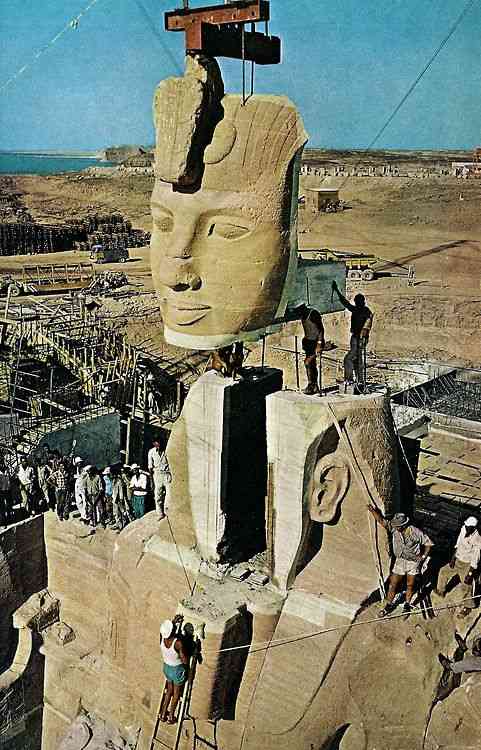
A committee has been formed in UNESCO to announce a competition for the temple rescue project. In the end, they chose to move the great temple when the temples were moved, the caves were not cut again the walls were moved to a new site and covered with a strong reinforced concrete vault, covered with stones on top, to imitate the rocks in which the temples were performed unprecedented building and construction skills: erection Temporary dam around the temples, strengthening the cabinets with steel frames, filling the facades with a thick layer of sand to facilitate the spread of the temples in individual blocks Temples were carefully and carefully spread into blocks of 20-30 tons each.
Up to 1,700 workers participated in the work. The track moved to 200 meters above the rocky bank of the Nile. After moving it to a new location, the great temple was rebuilt in smallest detail. The head of one of the statues was broken and fell once, lying in the place where it was before.
Thanks for reading!
Stay with us.
- Utopia Educators. Do subscribe to stay updated. Thanks
Sources:
1-http://factosvit.com.ua/hram-ramzesa-ii-v-abu-simbeli/

